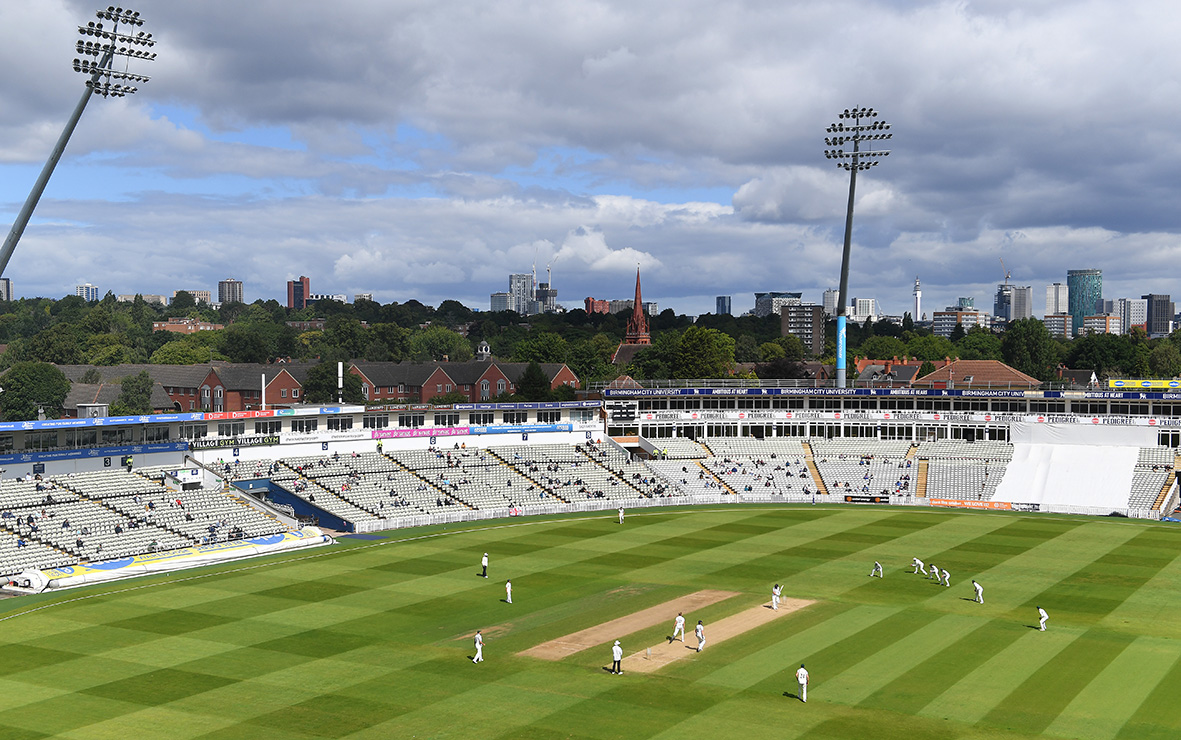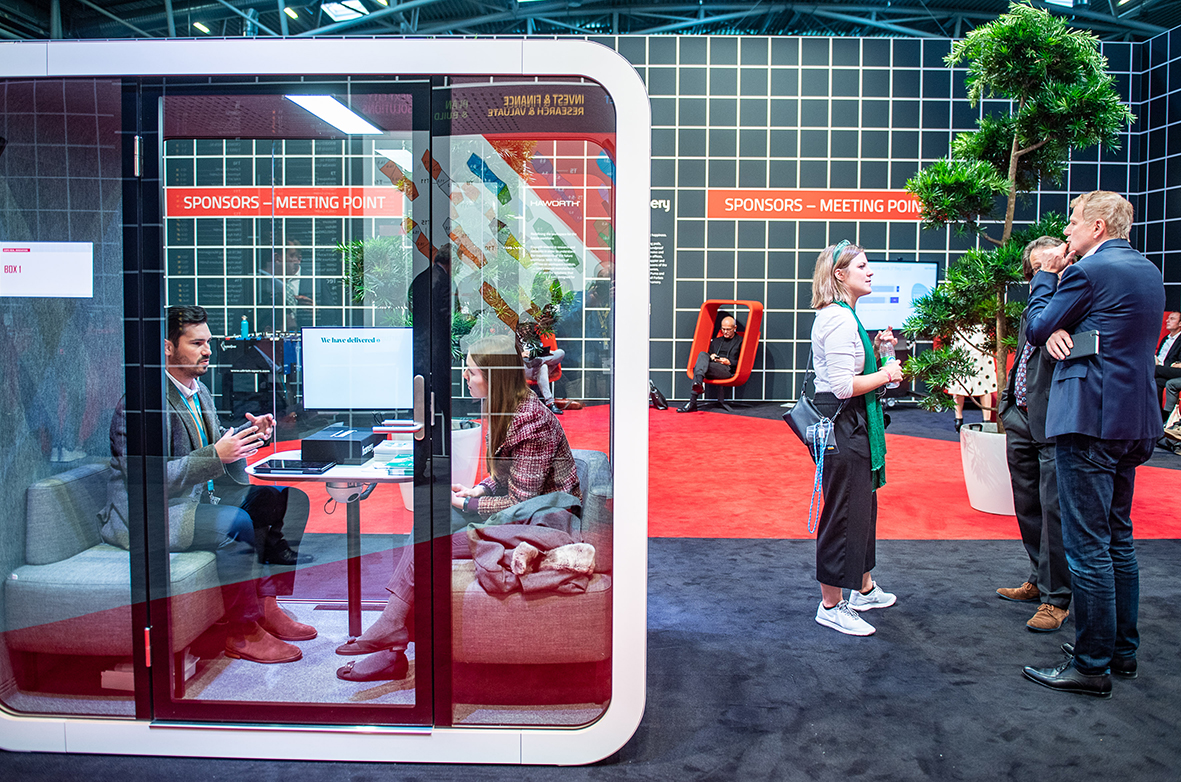
The COVID-19 pandemic has had a devastating impact on live sports events. The global value of the sports industry was estimated to be $471bn in 2018 – an increase of 45% since 2011. But, with stadiums closed to spectators since March, the industry has lost billions of pounds in ticket sales. UK Premier League clubs, for example, face a £1bn loss in the first half of 2020 alone, according to Deloitte.
Ken Scott FRICS, head of inspectorate for the UK’s Sports Grounds Safety Authority, has had a busy summer advising the government on how fans can be present again at live sports, but with the highest levels of safety. He is the lead author of SG02: Planning for Social Distancing at Sports Grounds, which is supplementary information to the Guide to Safety At Sports Grounds (the “Green Guide”). He says the guidance is to give venue operators the tools to plan for the return of some spectators, but clearly not for all.
The planning has meant being meticulous in determining how social distance is measured. We need to consider all the key components, such as modes of transport. If most people use public transport, they need to travel under socially distanced conditions, whereas if more come by car, what is the provision for extra car parking around the venue?”
James Hamilton MRICS, director of Global Host Cities and Sports Venues at Turner & Townsend, agrees. “The whole life cycle of the journey to and from the stadium has to be considered,” he says.
Hamilton’s team works on advising sports events as diverse as Wimbledon, the Commonwealth Games and the 2022 FIFA World Cup in Qatar. “Right now, not many venues are undertaking drastic modification measures,” he says. “They are concentrating much more on temporary measures that could allow perhaps up to 30-50% of fans to return. However, for new venues currently in the planning stage, it is prompting designers and owners to think about how they can build-in resilience if the pandemic continues, or if new ones occur in the future. This means building more permanent measures such as removable seating arrangements, wider concourses, enlarged toilet areas, and rethinking catering areas with protection screens and safe queuing systems.”
Then there is the speed of movement of people coming into the venue to consider, which will now be a much slower process, not only because people will need to keep a distance of 1m, plus mitigation, from each other. “As well as the normal security checks, there might also be a need to check people’s temperatures,” says Scott. “Social distancing will also need to be maintained in lobby areas, corridors, stairs and toilets – which can be notorious choke points for large crowds of people. Clearly, space will also need to be demarcated outside of venues for socially distanced queuing too.”

“Safe social distancing doesn’t just mean we keep a seat or two free between people. We need to consider all the key components, such as people’s mode of transport”
The global arts and entertainment industry remains severely restricted in how it can reopen as the COVID-19 pandemic continues. In the UK, the crisis has already left a £3bn hole in theatre revenues this year – a fall of more than 60%, according to a study by Oxford Economics for the Creative Industries Federation. Furthermore, an ITV News survey, distributed through the Independent Theatre Council and the Music Venue Trust, revealed that an astonishing 97.5% of venues and companies surveyed believe they could be facing permanent closure due to the pandemic.
Governments around the world are taking on new debt to help shore up their struggling arts industries, but the size of the bailouts varies significantly. Germany, for example, has set aside more than €1bn (£896m) to protect the arts, in addition to a furlough scheme and grants for freelance and self-employed musicians and performers.
In Australia, meanwhile, A$250m (£137m) has been promised to the music and arts sector and, in the US, a much smaller $75m (£57.7m) has been earmarked for the National Endowment of the Arts, although industry groups are desperately lobbying for more. In the UK government’s sizeable £1.57bn rescue package for the arts, culture and heritage industries will go some way to help keep many venues, staff and performers afloat in the short term.
%20in%20a%20recording%20for%20Blindness,%20sound%20installation%20at%20the%20Donmar%20Warehouse.jpg)
“For new venues currently in the planning stage, it is prompting designers and owners to think about how they can build in resilience if the pandemic continues”
But the larger question remains for live entertainment venues: how will they need to fundamentally change to allow spectators, and therefore their own revenue, to return?
In London’s Covent Garden, staff at the Donmar Warehouse theatre, for example, have been trying to adapt as best as they can to the situation. In August, the theatre reopened with an innovative, socially distanced show. The hour-long installation “Blindness” ran for four times a day for a limited number of visitors with e-tickets, with seating arranged 2m apart in a transformed venue. To reduce any potential airborne spread of the virus, the audience listened to the show on headphones as the narrative unfolded around them.
“Enhanced safety measures were put in place to ensure the health and safety of all staff and visitors,” says Michael Longhurst, artistic director at Donmar Warehouse. “All visitors are now required to wear a face and nose covering, unless they are medically exempted. We’ve also introduced a one-way system around the building, tightly enclosed toilet spaces can only be used one person at a time and, although all bars are closed, guests can bring their own water.”
The concern is that for many other venues, in the UK and elsewhere, it will just not be economically viable to open with the new rules in place, as theatre productions tend to only break even at around two-thirds capacity. And if theatres can only run at 20-25% capacity, producers will not be able to afford to put on a show. Without further government help or the return of larger size audiences, up to 70% of theatres could be out of business by the year’s end, according to trade body the Society of London Theatres (SOLT).
On 10 July 2020, RICS delivered the first “mask-on” conference in its 150-year history.
The Hong Kong Annual Conference had already been delayed due to the pandemic but despite this and other pandemic-related challenges, more than 300 delegates attended the Hong Kong Annual Conference at the W Hotel in Kowloon.
Both to ensure the safety and health of guests and to track contact history post-event, RICS implemented stringent precautionary measures that included mandatory temperature checks and hand sanitisation at the entrance, declaration forms asking delegates to confirm they’ve had no contact with COVID-19 patients in the past 14 days and have no symptoms. Face masks were compulsory at all times – even when presenting on stage.
There were also disposable mic covers for speakers, separate spaces for networking; bottled water and the option for meal boxes at lunchtime. It was one of the first face-to-face events in the city as life gradually recovered from the COVID-19 outbreak.

Conferences have always been an important part of the calendar for the property and construction industries – none more so than Europe’s biggest events such as MIPIM in Cannes and Expo Real in Munich. Normally held in late March, the huge MIPIM conference and networking bash was cancelled at the last minute just as the COVID-19 pandemic began. Although it won’t be possible for it to return this year, a smaller event – the MIPIM Urban Forum – is set to appear at Paris Real Estate Week on 16 September, under the theme “Embracing the Change”.

Meanwhile, since Expo Real usually appears later in the year, from 14 to 15 October, it has given the organisers more time to adapt the event into a new hybrid conference concept.
“Given the circumstances, it will not be possible for us to host Expo Real 2020 in its usual format,” says Tanja Schneider, marketing manager for real estate and construction at Expo Real. “Instead, a limited number of people will be able to attend physically with social distancing measures and safe exhibition spaces, while the full conference programme will also be simultaneously live-streamed for participants located around the world.”
The conference was given the go-ahead after the Bavarian government announced trade fairs would be able to start again from September, provided they adhere to strict new regulations on social distancing, hygiene, and traceability of all participants. “The Internationales Congress Center München (ICM) will adhere to a new health and safety concept,” says Schneider. “First, with 7,000m2 [75,350ft2] of exhibition space, there is plenty of space to exchange ideas, present yourself as a company and hold confidential conversations, despite the distancing regulations.”
The concept also stipulates that the traceability of all participants will be guaranteed by a pre-registration system, and as people come through the turnstiles, the organisers will know at all times how many people are on the event site. This will be important for safely controlling the flow of people at busy hubs such as the entrance or cloakroom, where queues can occur and large numbers of visitors congregate.
Reflecting the new era, the conference’s predominant themes will discuss what the pandemic will mean for real estate and investment markets in Germany and beyond, and what impact coronavirus will have on the property industry’s different asset classes. “We hope the new format will be an example of how some degree of normality can come back to big networking and exhibition events in the industry,” says Schneider.